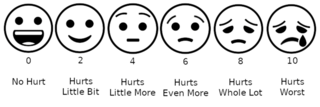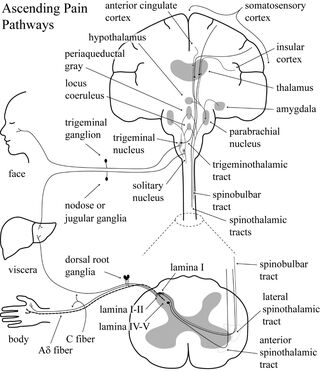Persuasion
Managing the Experience of Pain
How our expectations influence the experience of pain.
Posted September 30, 2022 Reviewed by Ekua Hagan
Key points
- Both physical and psychological pain are mediated via the same neural circuitry.
- One study found that a person's expectations influenced their experience of pain and the neural activity mediating that experience.
- Implications of the study include that managing a patient's expectations of pain may help mitigate its severity.

According to the CDC (Aug 11, 2022), the impact of the COVID-19 pandemic on our daily lives has been significantly reduced. Researchers have been assessing the impact that the virus has had on our lives, revealing some expected results along with unexpected ones. In a recent poll (Ipsos, Sept. 13, 2022), the majority of the people surveyed said that while the impact of the virus had changed their lives forever, they now saw themselves in a better place than they were only one year ago and that they were optimistic about their lives going forward.
Studies of the effects of the nationwide lockdown (generally from March to June of 2020) have shown that COVID has had mixed effects on anxiety, depression, and pain perception. Generally, anxiety and depression increased during the lockdown, but the experience of pain in sufferers of chronic pain was mixed. Some studies found that pain intensity increased during the lockdown, while others found that it decreased.
It may be that this mixed bag of results when it comes to pain is related to the nature of the experience of pain itself and the various factors that affect that experience. Pain is most often thought of as sensory or physical, caused by damage to tissue. But pain is also, simultaneously, psychological. Pain has cognitive, emotional, and motivational components. It can come about because of damage to the body, or it can result from damage to a social relationship, our self-image, or even our hopes for the future.
Interestingly, neuroscientists have found that both psychological pain and physical pain are mediated by the same circuitry in the brain. That circuitry is affected by incoming sensory information as well as by our expectations and the ways that we interpret what happens to us. This circuit involves the dorsolateral prefrontal cortex (dlPFC), the anterior cingulate cortex (ACC), and the amygdala in the midbrain.

Experimental Pain
In an fMRI study, Henderson, et al. (2020) examined the influence of expectations about a painful stimulus on activity in the pain circuitry in the brain in a sample of 24 healthy college students (students without chronic pain). The caveat that the sample was of non-chronic pain sufferers is important because, unfortunately, to study pain perception in people who don’t suffer it every day, the experimenter needs to create pain. That can be accomplished in a number of ways. The painful stimulus used was created by a thermal electrode that could raise or lower skin temperature between baseline (32C or 89.6F) and a maximum between 44 and 49C (111 to 120F) in intervals of 0.5C. Participants rated the intensity of pain evoked using a 10-point scale where a score of 0 indicated no pain at all and 10 indicated the most extreme pain imaginable. Average pain intensity ratings were approximately 5 on the rating scale for all conditions tested in the experiment. The experimenters then established three different expectations about the pain via manipulations of the instructions provided to the participants.
Participants were first told that they were going to receive a series of “noxious stimuli” and that they should rate the intensity of the pain of each. This was the no-expectation condition. Then, the same participants were told that the same stimuli would be repeated and that they should again rate the pain of each. However, unbeknownst to the participants, the temperature of the stimuli was either increased or decreased so the experience of the pain did not match the expectations that had been set up by the first condition of the experiment. In the last condition, the participants were told that they would again experience a series of noxious stimuli that might or might not vary in intensity from the original series. In this condition, participants expected the stimuli to vary, and, in fact, they did, so that the expectation matched the experiences the participants were having.
Results
The expectations the participants had about the pain they were experiencing significantly influenced that experience as well as the neural activity mediating that experience. When the expectation of what they were going to experience did not match the actual experience (condition two) the ratings of pain were significantly lower than they were when the expectations matched the experience (condition three). In addition, expectations also had a significant effect on neural activity. The patterns of activity in cortex regions of the circuit (the ACC and dlPFC) and the amygdala were significantly different when the experience matched expectations and when it did not.
The authors concluded that these differences in neural activation might represent the participants’ attempts to resolve the conflicting information they were receiving about what was going on in the world. They also speculated that there might be clinical applications. Perhaps managing expectations about the pain that could be experienced during a particular procedure might mitigate the severity of that pain. Clinicians might also be able to help sufferers of psychological pain manage their expectations, and their pain, as well.
References
Centers for Disease Control. https://www.cdc.gov/media/releases/2022/p0811-covid-guidance.html
Colloca, L., Thomas, S.,Yin, M., Haycock, N.R., and Wang, Y. (2021) Pain experience and mood disorders during the lockdown of the COVID-19 pandemic in the United States: an opportunistic study, 6, e958 www.painreportsonline.com
Henderson, L.A., Di Pietro, F., Youssef, A.M., Lee, S., Tam, S., Akhter, R., Mills, E.P., Murray, G.M., Peck, C.C., and Macey, P.M., (2020) Effect of expectation on pain processing: A psychophysics and functional MRI analysis. Frontiers in Neuroscience, 14(6).
doi: 10.3389/fnins.2020.00006
Ipsos. Axios-Ipsos Coronavirus Index. Ann Arbor, MI: Inter-university Consortium for Political and Social Research [distributor], 202-12-17. https://doi.org/10.3886/E129181V1.


